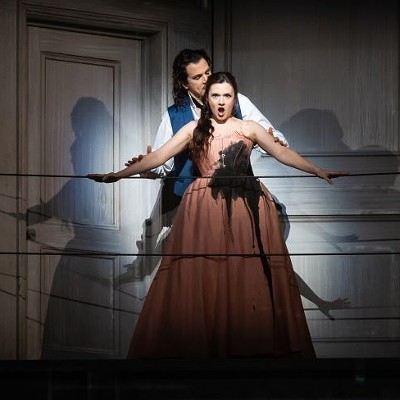Houston grew a great deal during the years following the end of World War II, with many new neighborhoods being developed during that time period. When Interstate 45 was built in 1948, Houston began to expand south, with the opening of Hobby Airport, and proximity to NASA, Ellington Field, and the Ship Channel fueling much of that growth.
During the nine years between 1953 and 1962, the suburb of Glenbrook Valley was built along Sims Bayou in Southeast Houston, on pastureland that had once been part of the enormous Allen cattle ranch.
At the time, Glenbrook Valley was viewed as a desirable place to live, a showcase of modern living, which garnered national attention during its early years. The neighborhood was designed as a cohesive planned community and composed primarily of mid-century modern and ranch style homes, which were both considered the pinnacle of style during the postwar period. Early on, the neighborhood got a lot of attention and was even featured in Better Homes and Gardens magazine. The atomic age, mod design that many of Glenbrook Valley's homes displayed really stood out as a pronounced style new to the Houston area, and the subdivision easily attracted people interested in settling there. Many prominent Italian American families were early residents, and some of the homes featured unique features such as prayer nooks to accommodate their observance of the Catholic faith.
The neighborhood was quiet and was considered far enough away from the noise and hassle of central Houston to offer a high quality of life to its residents, but close enough so it wasn't inconveniently isolated. Many of the single family homes had huge yards and were stylish without being too showy. The developer of Glenbrook Valley was a man named Fred McManus, who envisioned the neighborhood as another River Oaks, which had also been developed along a bayou.
As time marched on, much of Houston's development turned to the west of town, and many of the upscale eastern neighborhoods like Glenbrook Valley were no longer in the spotlight, and were increasingly ignored by many people. Obscurity is not necessarily a bad thing, but Glenbrook Valley ceased to be seen as a trendy neighborhood for affluent Houstonians, and had an increasingly older population.
Then came the economic crash of the 1980s, which caused a deleterious affect on the entire area. Many older residents moved away, causing those homes to fall into disrepair. The surrounding neighborhoods were largely low income and working class, and seedy motels and other businesses had sprung up to serve travelers around the airport.
Over the years, some of the original homes had also been remodeled to the point of losing much of the appeal of their original design. Before mid century mod became trendy and in demand again, the style looked dated and old fashioned to many people.
The neighborhood also became more ethnically diverse as time marched on. Minorities, particularly Hispanics and Asians, began to have a larger presence, drawn to the neighborhoods still affordable homes with big yards, less than ten miles from the center of Houston. Glenbrook Valley became home to new generations of Houstonians, and in recent years something interesting happened. A lot of relatively young and hip individuals began to appreciate mid century mod design again. People began to view Glenbrook Valley as a sort of time capsule, a neighborhood of atomic age homes that still retained much of the styling that had made them so groundbreaking and stylish more than 50 years ago. House hunters looking for a mid century home that hadn't had its original features completely destroyed by remodeling began to view Glenbrook Valley as a sort of diamond in the rough. Sure, the surrounding area wasn't great, but the neighborhood itself had a specific character that was unique, and more people began to notice that it was something pretty special.
In 2008, members of the neighborhood's civic club started campaigning to have Glenbrook Valley designated as a historic district. For the campaign to be successful, 51 percent of the neighborhood's residents were required to sign a petition in favor of historic status, and there were accusations of people being misled in order to secure their signature. Passions ran high, with some long term neighbors and friends turning on one another. The Houston Press reported on the conflict in a 2011 feature, detailing the feud erupting between factions that supported the historic designation and those that did not. Many residents were wary of any new regulations that the historic neighborhood status might impose on them if they decided that they wanted to remodel their home, and felt that they had been lied to by some who were trying to get them to support the historic designation.
Despite the antagonism that the campaign created among some residents, Houston City Council granted the historic status to Glenbrook Valley in 2011, making it the city's first historic district outside of the Inner Loop, and the largest postwar historic district in the country.
Traditionally, Houstonians haven't always embraced their past, instead preferring to look toward the future, and that outlook extends to appreciating the history and architecture of older neighborhoods. That does seem to be changing though. More and more people are seeing value in preserving the character of some of Houston's more unique communities, perhaps realizing that, once that character is lost through irresponsible or heavy handed redevelopment, it cannot be regained.
Glenbrook Valley is a perfect example of modern Houston - ethnically diverse, and home to both older residents who've lived there for decades, and younger individuals who love the mid century style that Glenbrook Valley possesses in more abundance than any other area of the city. The population of Glenbrook Valley accurately reflects the changing demographics of Houston, spotlighting how modern residents can find so much to love in some of our older neighborhoods. With its historic designation and hip neighborhood status firmly in place, it will be interesting to see what will happen to Glenbrook Valley over the next few years. I think it's likely that the southeast side of town will slowly begin to gentrify in general, but even if that doesn't happen anytime soon, Glenbrook Valley seems certain to remain a desirable neighborhood unique to Houston. As a relatively unchanged area of mid century homes, it will continue to be an oasis for anyone who loves that style.
What's old is new again.
Flashback:
The Changing Face of Houston - Downtown Then and Now
The Changing Face of Houston - Oak Forest Then and Now
The Changing Face of Houston - Sharpstown Then and Now
The Changing Face of Houston - Spring Branch Then and Now





